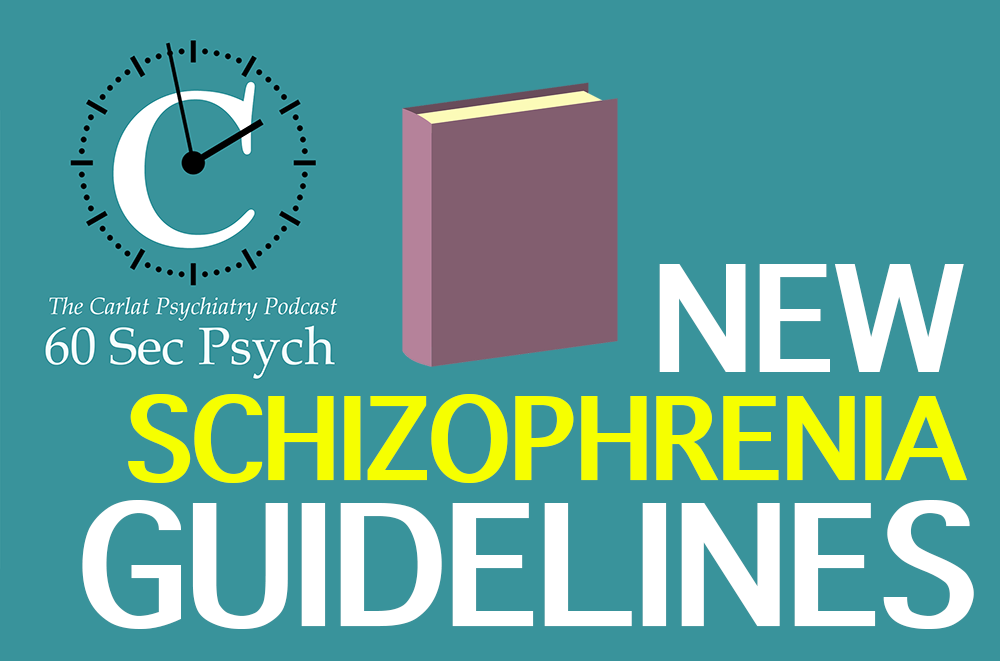In September 2020 the APA updated their schizophrenia practice guidelines. Here’s how things have changed since the 2004 edition. [Link]
Date Published: 9/26/2020
Duration: 4 minutes, 27 seconds
Transcript:
In September 2020 the APA updated their schizophrenia practice guidelines. Here’s how things have changed since the 2004 edition.
Clozapine expanded. The new guidelines recommend a trial of clozapine after failure of two antipsychotics (< 20% response after 6 weeks). Tolerability problems and non-adherence do not count as failures, and an antipsychotic blood level should be checked on at least one of those trials to make sure the patient is taking it. Unlike the 2004 guide, a first generation antipsychotic trial is no longer required before moving to clozapine. Clozapine is also recommended for patients with suicidality, problematic aggression, and tardive dyskinesia.
Blood levels boosted. Antipsychotic blood levels are now recommended to determine adherence, although they generally don’t inform antipsychotic dosing. An exception is clozapine, whose therapeutic effects are greatest at > 350 ng/mL.
Psychosocial therapies get a rise. In a striking change, the guidelines recommend that all first-episode patients be treated in a coordinated specialty care program. These teams incorporate medication treatment with education, resiliency training, family therapy, and vocational rehabilitation. After the first episode, the guide recommends ten different psychotherapies that can be matched to the patient’s goals, along with links to free training manuals.
The full guide includes useful antipsychotic charts, strategies for side effect management (with metformin first-line for weight gain), and links to rating scales.
Got feedback? Take the podcast survey.


_-The-Breakthrough-Antipsychotic-That-Could-Change-Everything.jpg?1729528747)



